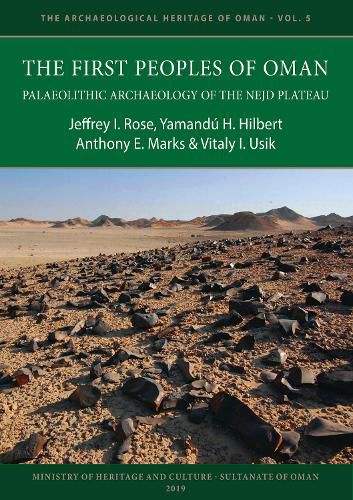Readings Newsletter
Become a Readings Member to make your shopping experience even easier.
Sign in or sign up for free!
You’re not far away from qualifying for FREE standard shipping within Australia
You’ve qualified for FREE standard shipping within Australia
The cart is loading…






In Dhofar, the southern Governorate of the Sultanate of Oman, the deep canyons cutting the Nejd plateau once flowed with perennial rivers, feeding wetland environments, forests, and grasslands across the now desiccated interior. The first peoples of Oman flourished along these waterways, drawn to the freshwater springs and abundant game, as well as the myriad chert outcrops with which to fashion their hunting implements and other tools. The landscapes of the Nejd Plateau are a natural museum of human prehistory, covered in carpets of chipped stone debris. The archaeological evidence presented in this work encompasses the cultural remains of over a million years of successive human occupations, from the Lower Palaeolithic to the Late Palaeolithic. Once considered an evolutionary backwater or merely a migratory way station, the archaeology of Dhofar requires a fundamental reconsideration of the role of Southern Arabia in the origin and dispersal of our species.
$9.00 standard shipping within Australia
FREE standard shipping within Australia for orders over $100.00
Express & International shipping calculated at checkout
In Dhofar, the southern Governorate of the Sultanate of Oman, the deep canyons cutting the Nejd plateau once flowed with perennial rivers, feeding wetland environments, forests, and grasslands across the now desiccated interior. The first peoples of Oman flourished along these waterways, drawn to the freshwater springs and abundant game, as well as the myriad chert outcrops with which to fashion their hunting implements and other tools. The landscapes of the Nejd Plateau are a natural museum of human prehistory, covered in carpets of chipped stone debris. The archaeological evidence presented in this work encompasses the cultural remains of over a million years of successive human occupations, from the Lower Palaeolithic to the Late Palaeolithic. Once considered an evolutionary backwater or merely a migratory way station, the archaeology of Dhofar requires a fundamental reconsideration of the role of Southern Arabia in the origin and dispersal of our species.